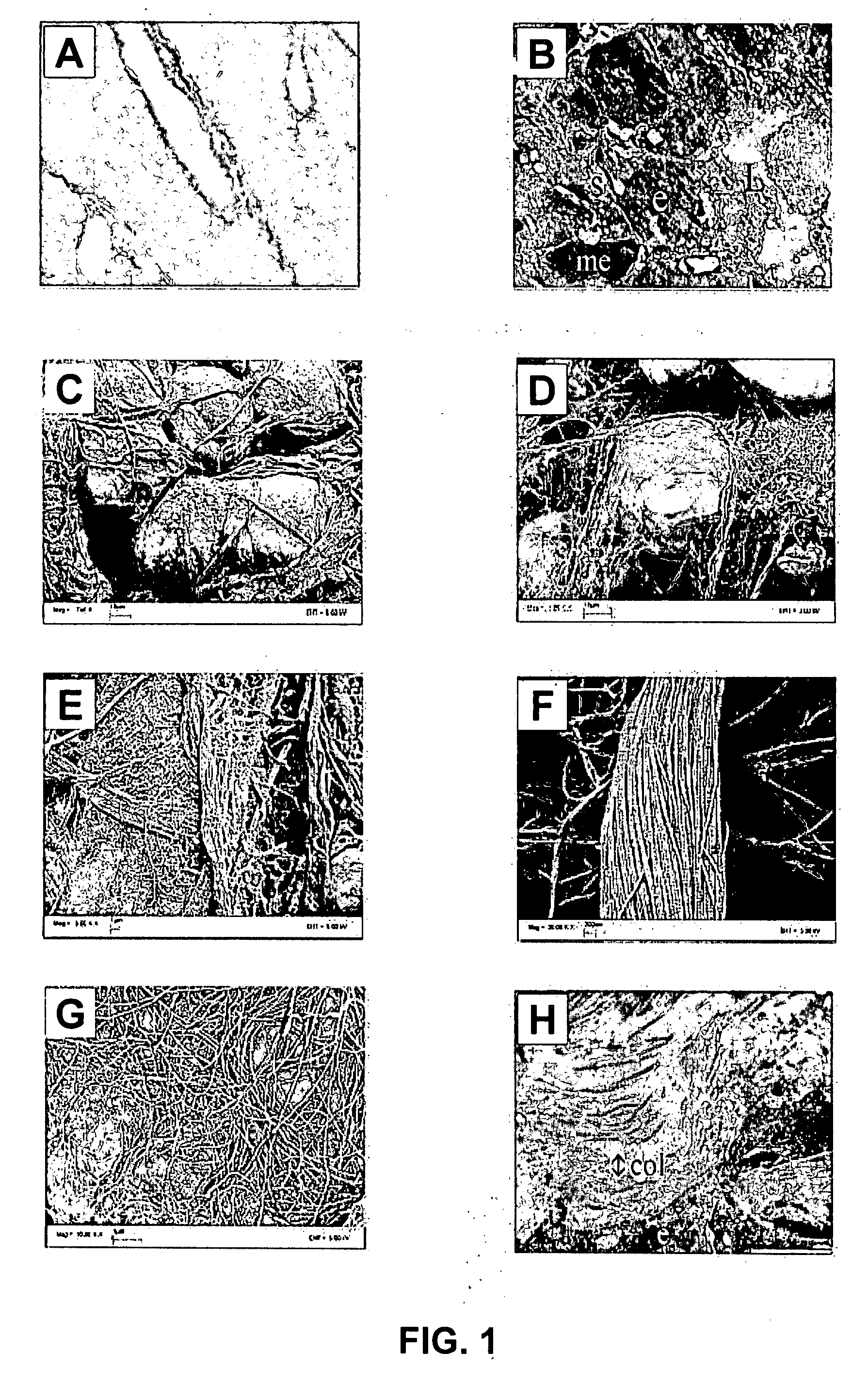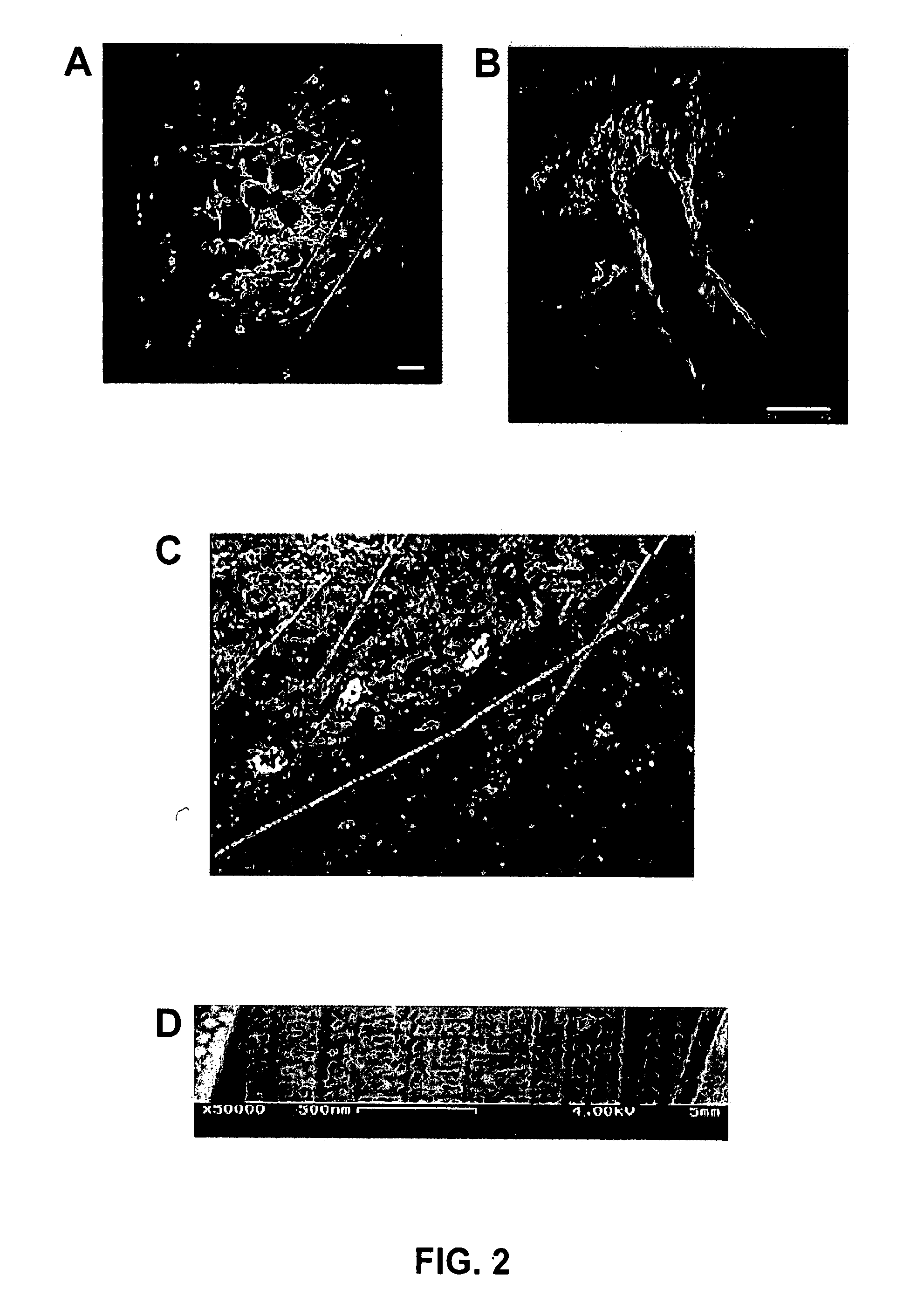Stromal collagen in the diagnosis and characterization of breast cancer
- Summary
- Abstract
- Description
- Claims
- Application Information
AI Technical Summary
Benefits of technology
Problems solved by technology
Method used
Image
Examples
example 1
Collagen Reorganization at the Tumor-Stromal Interface Facilitates Local Invasion
I. Abstract
[0087] Stromal-epithelial interactions are of particular significance in breast tissue since misregulation of these interactions can promote tumorigenesis and invasion. Moreover, collagen-dense breast tissue increases the risk of breast carcinoma, although the relationship between collagen density and tumorigenesis is not well understood. As little is known about epithelial-stromal interactions in vivo, it is necessary to visualize the stroma surrounding normal epithelium and mammary tumors in intact tissues to better understand how matrix organization, density, and composition affect tumor formation and progression. In this example, we use both laser-scanning multiphoton and second harmonic microscopy to determine the organization of specific collagen structures around ducts and tumors in intact, unfixed and unsectioned mammary glands. Local alterations in collagen density are clearly see...
example 2
Nonlinear Optical Imaging Systems for Detecting Cancer
[0106] It is a goal of the present invention to provide nonlinear optical imaging systems capable of generating information relevant to the diagnosis of cancer in biological materials, such as intact, unsectioned and unstained tissues. Useful imaging systems for some applications are noninvasive and nondestructive, and are capable of providing high resolution images of surface and subsurface components and features of tissue. Useful imaging systems are also capable of rapid in situ optical analysis, for example to provide real time imaging for facilitating therapeutic procedures, such as surgical removal of tumors and for quantitative analysis of the margins of a given tissue removal therapy.
[0107] In one embodiment, the present invention provides an optical system capable of generating, simultaneously or non-simultaneously (e.g. sequentially) both MP laser-scanning microscopy images and harmonic generation (i.e., first, second...
example 3
Nonlinear Optical Imaging of Cellular Processes in Breast Cancer
[0114] Nonlinear optical imaging techniques such as multiphoton and second harmonic generation microscopy used in conjunction with novel signal analysis techniques such as spectroscopic and fluorescence excited state life-time detection have begun to be used widely for biological studies. This is largely due to their promise to non-invasively monitor the intracellular processes of a cell together with the cell's interaction with its microenvironment. Compared to other optical methods these modalities provide superior depth penetration and viability and have the additional advantage in that they are compatible technologies that can be applied simultaneously. Therefore, application of these nonlinear optical approaches to the study of breast cancer holds particular promise as these techniques can be used to image exogenous fluorophores such as GFP as well as intrinsic signals such as second harmonic generation from colla...
PUM
 Login to View More
Login to View More Abstract
Description
Claims
Application Information
 Login to View More
Login to View More - R&D
- Intellectual Property
- Life Sciences
- Materials
- Tech Scout
- Unparalleled Data Quality
- Higher Quality Content
- 60% Fewer Hallucinations
Browse by: Latest US Patents, China's latest patents, Technical Efficacy Thesaurus, Application Domain, Technology Topic, Popular Technical Reports.
© 2025 PatSnap. All rights reserved.Legal|Privacy policy|Modern Slavery Act Transparency Statement|Sitemap|About US| Contact US: help@patsnap.com



